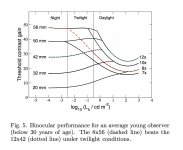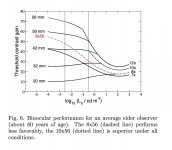SeldomPerched
Well-known member
Hi Andreas, thanks for pointing to that 10x54 Victory HT review, which I have just looked at. Roger definitely prefers field flattening binoculars so possibly his thoughts there don't have too much impact on these Zeiss and Leica conversations. I like both the Leica and the Zeiss and agree with your summing up, though the differences over edge distortion and edge sharpness don't really affect my viewing style nor therefore my enjoyment in the field (literal outdoors / countryside sense of the word 'field' not the optical field).Hello everyone,
I also had the Zeiss FL 7x42 in use for some time and compared to the Leica 7x42 it has less CA.
In my opinion, the FL binoculars have few problems with CA, with the Leica a bit more noticeable but not yet disturbing!
Nevertheless, the Leica UV 7x42 is the more comfortable binoculars for me, the distortion is much lower and does not set in so early, the edge sharpness is also better and the glass does not have as much and clear astigmatism.
In a later evaluation of the Zeiss HT, Roger Vine put his good evaluation of the Zeiss FL 7x42 into perspective again, he found the severe distortion increasingly annoying.
Andreas
For Adhoc and all reading this thread, Roger has also written more recently a review of the Leica 7x42 under discussion — at least the HD version: take note that it's the HD original version (i.e. white lettering) not the Plus (red lettering / Schott glass) that he has reviewed.
Tom








